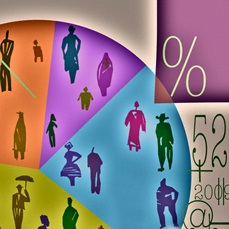Report Highlights Software’s Satisfaction Gap

In this highly-competitive economy, software providers are looking to protect their assets while enterprises operate under a business imperative of optimizing value. American software company, Flexera Software, aims to address this gap with software products for licensing management, compliance, installation and application packaging solutions.
The Flexera Software White Paper, 2012 Key Trends in Software Licensing and Pricing Report, explores a number of key industry trends, including this value-to-satisfaction gap. Conducted in partnership with IDC's Software Pricing and Licensing Research division, the annual research project examines software licensing, pricing as well as enforcement trends and best practices. The survey is aimed at application producers, including software vendors and intelligent device manufacturers, and enterprises who use and manage such products. Of the 334 respondents who participated in the survey, 101 were enterprise executives and 233 were application producer executives.
There are now numerous ways to consume and pay for software and enterprises are enterprises are demanding this flexibility. The most common pricing models are node locked (40%) and feature concurrent user (floating or network license) (39%). Among the runner-ups were device (33%), named-user (27%), token concurrent user (floating or network license) (24%), site (22%) and client access license (CAL) (21%). The report's authors projects that over the next two years, feature concurrent user (floating or network license) and node locked licensing are likely to remain the most prevalent, with the utility model (usage, time, number of transactions) expected to grow by 23%, indicating the increased interest in usage-based pricing.
Value was a common theme of the report. Application producers feel they're delivering more value than they're getting paid for, while enterprises expressed dissatisfaction with the price-to-value they receive from their software. The applications that drew the highest price-to-value satisfaction ratings were desktop applications (65%), server applications (51%) and engineering/technical applications (43%). On the other hand, ERP software (25%), database software (22%) and CRM software (20%) suffered from the lowest price-to-value satisfaction ratings.
Flexera's report found that software vendors continue to rely on compliance audits as a primary means of enforcement. "As application producers seek new revenue sources, and acknowledge they have poor visibility into customer software usage, software license audits continue to be a popular tool by which they enforce their license agreements," notes the reports authors.
Microsoft is the most aggressive auditor and large enterprises with greater than $1 billion in revenue, are the most likely targets. Among the enterprises surveyed, 64% reported having an audit (or a license review) during the previous 18-24 months, while 36% reported being subject to two or more audits during that time period, and 10% say they've been audited more than three times.
Enterprises, it should come as no surprise, prefer network licensing methods of enforcement. As with last year's report, network licensing had the most votes (45%), followed by product activation (24%). Dongles (61%) and trust-based licensing with manual vendor compliance audit (15%) were cited as the least liked methods.
As always, there is a delicate balance between maximizing revenue streams and pleasing customers, as producers are well aware. With the increase in licensing and pricing strategies, the producers have more tools to work with, but the added complexity makes for a more sophisticated balancing act.












